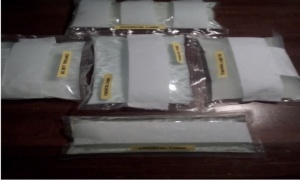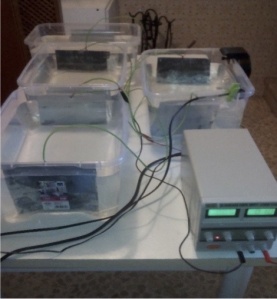Solution for brain-damage
This article is part of the KF Plasma Times March 2019
Keywords: coma, helmet, gans.
Published on: March 2019
Subject
This paper documents a solution for brain damage, as applied to a car accident survivor whom, with a severe brain damage, went into coma. The application procedure was two-fold. It involved administering some mineral supplements and externally applying GANS plasma water (also called Liquid Plasma or LP in this article) by wearing a specially prepared plasma helmet.
Method
The following supplements are to be given orally or intravenously, depending on the condition of the person.
- Omega 3 - 1000 ml/mg a day,
- Folic acid - 10 mg per day* (normal dose),
- Potassium - 400 ml/mg per day (normal dose),
- Calcium - 500 ml/mg per day* (normal dose),
- Magnesium - 500 ml/mg per day*, (normal dose)
- Zinc - 42 ml/mg per day* (normal dose).
* THE FIRST TWO DAYS DOUBLE DOSAGE, IF THE SUBJECT'S RESPONSE IS GOOD TO EXTEND TO A WEEK OR MORE
What creates the brain is the skull, so a correct amount of calcium is needed. When there is a brain damage, the body or some limbs contract and therefore it is necessary to introduce two elements: Potassium and Magnesium. Magnesium is essential for the brain and nervous system, as well as having different functions for each area of the first. Magnesium is important for the nervous system as it allows the correct flow of electrical energy within it.
Potassium, on the other hand, transfers the command from the brain to the muscles and regulates its contraction; combined with sodium creates the neuronal electrical conductivity. Omega 3 instead, favors the reproduction of brain cells, while the folic acid allows higher information processing speed and better memory capacity through splitting and therefore the multiplication increases even more. Zinc is essential in the formation of neurons.
In the first two days double the dosage, if the subject's response is good, extend to a week or more. Calcium, magnesium and zinc need to be mixed in equal parts before administering e.g. one capsule of each. With potassium, if the subject starts to have diarrhea, halve the dosage [1].
It is therefore necessary to work on two lines: one of matter, where we need to give the physical constituent elements to create the matter quickly, and the other plasmatic, to create the connection with the neuronal system (CO2) and the creation of the brain with the regulation of emotions (ZnO Liquid Plasma) [2].
Plasma Helmet
Plasma water’s equivalent to 1000gr brain weight (2% of 50 kg body weight) needs to be prepared.
- 75% of water = 750ml LP CO2 + ZnO,
- 1000ml – 750ml LP = 250ml GaNS:
- 60% White brain matter (axons) GaNS = connections = 150ml CO2
- 40% Gray brain matter (neurons) GaNS = brain nerve part = 100ml ZnO
- + extra 100ml of CH3 LP [3].
The above GaNSes and Liquid Plasmas were made into pillows to line the inside and outside of the helmet (Fig. 1), with:
- 1 small pillow for temporal lobe - right part (795ml),
- 1 small pillow for temporal lobe - left part (795ml),
- 1 small pillow for parietal lobes right and left part (795ml), as the central part needs to be well covered,
- 1 small pillow for occipital lobe (795ml),
- 1 smallest pillow for frontal lobe 405ml [4].
Such pillows (Fig. 2) are prepared with the following proportions of the GaNSes and LP:
Small pillows (795ml):
- 600ml LP of CO2 + ZnO,
- 60ml LP of CH3,
- 80ml GaNS of CO2 (PH 10.06 Mv +96),
- 55ml GaNS of ZnO (PH 6.34 Mv -230) [5].
Pillow for frontal lobe (405ml)*:
- 300 ml liquid plasma CO+ZnO,
- 40 ml liquid plasma CH3,
- 40 ml gans CO2 (Ph 10.06 and +96 mV for GaNS),
- 25 ml gans ZncO (Ph 6.34 and-230 mV for GaNS).
Note: It is important that all of the brain is covered by this material without spacing and with direct contact to the scalp [6].
The exact amounts of LP and GaNS in each pillow differ slightly from the initial calculations, because the brain is contained inside the skull. Having to do the pillows around, it was necessary to adjust the volumes to ensure a complete coverage, proportional to each part of the brain.
The outer sphere is always larger than the internal sphere, however the magnetical-gravitational proportions are respected here.
GANS Preparation
In the first place, we need to reproduce the same conditions during the creation of the GaNS, just like when the human brain was created [7]. Therefore, the ZnO GaNS used in this application was produced, replicating the conditions of the creation of life on this planet. In the GaNS making process, factors such as: temperature, wind and varying electricity current (replicates the ‘tides’ of solar magnetism) were considered and applied – as depicted in Fig. 3. Detailed rationale for and description of the GaNS making procedures, can be found in [8].
Application
The plasma helmet was applied (Fig. 4) for the period of 4 months and the mineral supplements were administered for 10 months. From the very first days, the results of this application were noticeable and are described below in further detail.
First day - 26/09/2016
- From 22.00 to 00.00 = 2 hours application
- From 00.00 to 4.30 = break
- From 4.30 to 5.30 = application
- From 21.30 to 2.30 = 5 hours application [9].
Effects:
- Deep sleep,
- Heart rate dropped from 120 to 100 per minute,
- Muscular deconstruction (especially of the neck),
- Total reduction of any movement [10].
Second day - 27/09/2016
- From 21:30 to 2:30 = 5 hours
Effects:
- Same previous effects with a further reduction in heart rate below 90 beats per minute,
- N.B. used two GaNS mattresses (one above the basin and the other below),
- Slept until late morning [11].
Results
Apart from lowering of the heart rate, reduction in involuntary movement and muscular deconstruction, changes were also observed in the MRI scan of the brain. Fig. 5 depicts a healthy human brain for comparison with the MRIs of the brain of the subject in Fig. 6.
The summary of the analysis of the brain MRI scan in Fig. 6 (left) highlights the severe cranial traumas with widespread 3rd grade axonal injury, post traumatic ESA, emoventricular and multiple contus outbreaks.
Further MRI Details:
- Ventricular system in non-dilated axis, with blood level in the left occipital horn.
- False-bruising focuses are observed:
- Right temporal seat (multiple);
- Right frontal;
- In frontal left.
- Subarachnoid blood in the hemispherical hemisphere in frontal and right temporal front, left frontal.
- Outbreak fracture in the retractorial site, to the right.
- Serious contusion-hemorrhagic lesions of the splenic body of the callous body.
- Other similar injuries are observed in the subcortical, numerous and bilateral, as well as in the right thalamus, in the head of the caudate nucleus of both sides, in the left cerebral pendulus.
- Liquid collections of the middle ear cavities, bilaterally.
- Conclusions: In addition to numerous tear-contus outbreaks of direct trauma, combined with severe widespread axonal damage (Grade III by Adams Gennarelli).
After processing, 9 months later, the MRI brain scan in Fig. 6 (right) is showing no obvious changes of the acute brain. Gliotic outcomes bilateral frontal, right temporal, left talamic and the sphenium of the corpus callosum. Ventricular system in axis and not dilated.
References
[1]. G. Lapadula, "Spaceship Blueprint Day - Day of Mozhan," KF SSI, 14 April 2018. [Online]. Available: https://youtu.be/7ikCf7DSNng?t=35m25s.
[2]. G. Lapadula, "Spaceship Blueprint Day - Day of Mozhan," KF SSI, 14 April 2018. [Online]. Available: https://youtu.be/7ikCf7DSNng?t=36m15s.
[3]. G. Lapadula, "Spaceship Blueprint Day - Day of Mozhan," KF SSI, 14 April 2018. [Online]. Available: https://youtu.be/7ikCf7DSNng?t=38m5s.
[4]. G. Lapadula, "Spaceship Blueprint Day - Day of Mozhan," KF SSI, 14 April 2018. [Online]. Available: https://youtu.be/7ikCf7DSNng?t=40m55s.
[5]. G. Lapadula, "Spaceship Blueprint Day - Day of Mozhan," KF SSI, 14 April 2018. [Online]. Available: https://youtu.be/7ikCf7DSNng?t=41m19s.
[6]. G. Lapadula, "Spaceship Blueprint Day - Day of Mozhan," KF SSI, 14 April 2018. [Online]. Available: https://youtu.be/7ikCf7DSNng?t=41m35s.
[7]. G. Lapadula, "Spaceship Blueprint Day - Day of Mozhan," KF SSI, 14 April 2018. [Online]. Available: https://youtu.be/7ikCf7DSNng?t=46m39s.
[8]. G. Lapadula, "KF Wiki," 2018. [Online]. Available: https://en.kfwiki.org/wiki/Plasma_Application_for_Coma_Cases. [Accessed 15 2 2019].
[9]. G. Lapadula, "Spaceship Blueprint Day - Day of Mozhan," KF SSI, 14 April 2018. [Online]. Available: https://youtu.be/7ikCf7DSNng?t=42m26s.
[10]. G. Lapadula, "Spaceship Blueprint Day - Day of Mozhan," KF SSI, 14 April 2018. [Online].
Available: https://youtu.be/7ikCf7DSNng?t=42m44s.
[11]. G. Lapadula, "Spaceship Blueprint Day - Day of Mozhan," KF SSI, 14 April 2018. [Online].
Available: https://youtu.be/7ikCf7DSNng?t=42m44s.
Supplementary material
This article is based on the material presented by the author during the “Spaceship Blueprint Day - Day of Mozhan”. The transcript of the original presentation is available from the KF Wiki https://en.kfwiki.org/wiki/Plasma_Application_for_Coma_Cases.






